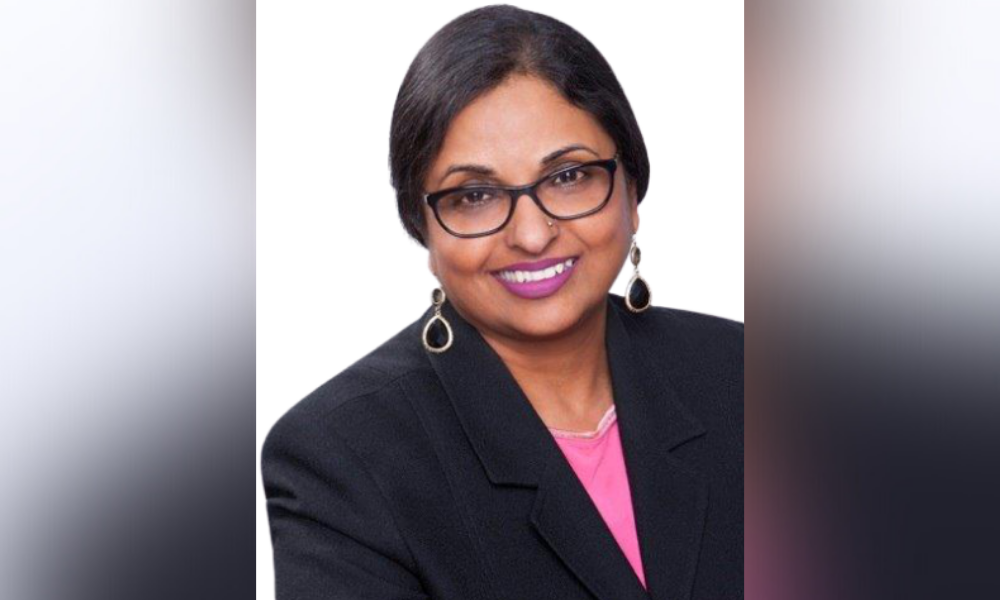Impartial arbitration service is reaching out to educate and promote awareness among Canadian consumers

Over the past few weeks, promoting consumer literacy has been a point of focus for firms, regulators, and other stakeholders in Canada’s financial services space. Among those is the OmbudService for Life and Health Insurance (OLHI), whose campaign for Financial Literacy Month has been focused on raising awareness of its services among Canadian millennials.
“We felt this would be a great demographic to reach out to because they're just starting out in life, and perhaps life insurance is the last thing on their mind,” said Yogini Parthasarathy, deputy ombudsman at OLHI, who has more than 25 years of life and health insurance experience. “So we believe it's important to educate them on the significance of owning a life insurance policy, to protect their assets, or their young family. And in the rare instance that something goes wrong, they’re not alone.”
The ombudservice’s efforts at consumer education goes beyond the Financial Literacy Month campaign, as it also offers links with useful information about life insurance on its website. The goal there, Parthasarathy said, is to equip Canadians to make better decisions in purchasing a life insurance policy.
At a high level, OLHI also wants to broaden awareness of its existence as a free, bilingual, independent, and impartial alternative dispute resolution public service for Canadian consumers in the life and health insurance space. Ninety-nine per cent of Canadian life and health insurance companies are OLHI members, who all refer consumers to the office as well through their websites in the course of addressing complaints submitted to them.
“The types of complaints we handle include different types of life and health insurance products such as disability insurance, travel insurance, and extended health insurance, as well as segregated funds and annuities,” Parthasarathy said. “The cases usually relate to denied claims, but we also work on other areas of concern such as premium increases on policies, deferred sales charges on seg funds, and returns on universal life products that don’t match the policyowner’s expectations.”
Roughly speaking, the OLHI steps in after a consumer goes to the insurer with a complaint, and has either received a final position letter or not received any response 90 days since they filed their complaint. At that stage, consumers can either call or visit the OLHI website; from there, an intake team evaluates the case to confirm if it is within the scope of the office’s services. If so, the OLHI makes sure to get proper authorization from all parties before moving forward.
Once all the related documents are received from the insurance company, the real work can begin. The case is assigned to an analyst, who contacts the consumer to let them know they’re being looked after. After digging through the information and gets to the heart of a case, the analyst can either contact the insurer to point out details they might have overlooked, or get back to the consumer and dispel misconceptions they may have about the product they purchased.
“Sometimes we see much more complicated cases that take longer time. Those cases are escalated to an ombudservice officer for further negotiation with the insurer so that the analyst can move on to another complaint,” Parthasarathy said. “Even though our recommendations are non-binding, we find that insurers do take them seriously. For our part, our analysts also take each case seriously, no matter how small.”
The vast majority of the time, she said the system is working as expected, and it’s just a matter of explaining a particular aspect of insurance to the consumer. When life insurance policies are automatically renewed after 10, 20, or 30 years without evidence of insurability, for example, some consumers can be shocked at how much their premiums go up. In those instances, it falls on the OLHI to explain that it’s because the insurers are taking on higher risk.
Universal life policies can be another sticking point. As Parthasarathy explained, those products came into being during the ’80s, when interest rates were above 10% and people were mostly living beyond 70, but not 80. Because today’s low interest rates and longer life expectancies are different from what was projected would happen, universal policies ended up being more expensive than they were expected to.
“We do encourage consumers to keep their information with their insurers updated, and read the statements they’re sent. That can help them ask questions earlier, and possibly take remedial action before products get to the point when they’re too expensive to hold on to,” she said. “When we do come into play and walk the consumer through how the product works, that’s when they calm down and are satisfied that nobody’s taking him or her for a ride.”
Looking ahead, Parthasarathy said the OLHI will continue with its work to educate consumers on its services. Apart from that, she estimates that travel insurance will become a key dispute area. As insurance companies develop new products to address COVID-related risks and travel gradually opens back up, there will come a time when real-world risks collide with insurers’ models and underwriting assumptions, as well as Canadian travellers’ understanding of the policies they buy to get peace of mind.
“I’m sure insurance companies are putting their policies and procedures around travel right now,” she said. “It’s hard to tell when it’s going to hit us, but it will, and we’ll be doing our best to take on that challenge as new products are being offered.”



